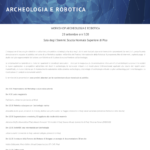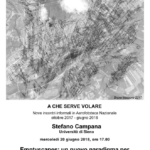At Gent University in Belgium Robert Bewley, then Head of English Heritage’s Aerial Survey Unit, argued that “…the introduction of LiDAR is probably the most significant development for archaeological remote sensing since the invention of photography”.
Indeed, the advent of airborne laser scanning (ALS or LiDAR, Light Detection And Ranging) introduced a completely new opportunity to detect and map archaeological features and landscapes previously hidden beneath the woodland canopy.
In the last ten years a fair number of LiDAR surveys have been implemented for archaeological purposes and it is now widely accepted that this technique represents the most efficient system for the exploration of wooded areas, and in some instances of open pastureland too. Within the framework of my own research it seemed worthwhile to implement a fairly detailed survey of projects making active use of LiDAR survey around the Mediterranean Sea and across Europe more generally.
The result shows some interesting trends and some equally obvious limitations in the application of LiDAR technology within archaeology. A survey of published case-studies shows the geographical distribution of 37 published experiences which have made use of LiDAR data.
The virtual absence of experience in the Mediterranean area is both obvious and remarkable. The main reason may lie in differing methodological approaches, differing schools of thought or in cultural or environmental biases of various kinds. Some limited attempts have been made at the use of LiDAR survey in Italy but they have for the most part been fairly unsuccessful, because of the quality and density of the Mediterranean woodland canopy and scrub.
Up until very recently, indeed, airborne LiDAR survey has proved substantially unproductive in Mediterranean contexts.

